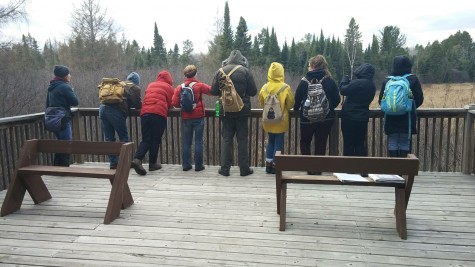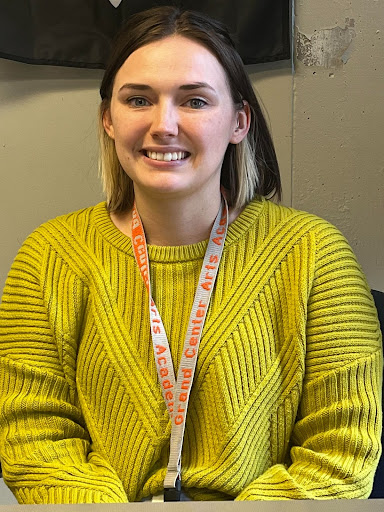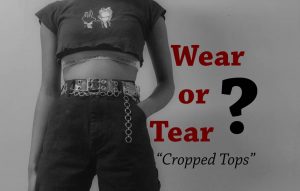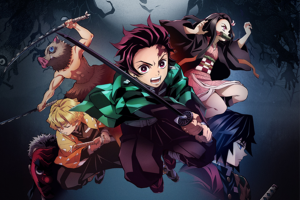AP Environmental Science Takes Treehaven
April 7, 2016

The AP Environmental Science Class stands together while overlooking a sedge meadow at the end of a hike to “The Listening Place” in silence for a few minutes, listening to the sounds of nature.

The APES Class are dressed in waders, ready for stream ecology, catching bugs in streams as apart of one of their daily lessons. The nets are used to sift through sand and more dense surfaces to find the bugs. The thing the class is standing on. Mr. Warren originally had that as his desktop wallpaper on his laptop, which was the reason behind the class going to Wisconsin in the first place.
Fred Warren’s AP Environmental Science Class took a weekend trip to Tomahawk, Wisconsin to Treehaven to get a hands-on feel of environmental science. Treehaven is a place that helps conserves natural habitats for trees, and is also a place where people of all ages can see natural habitats that otherwise cannot be seen in the city.
Numerous students including Joerdan Carney, Vernesha Jackson, JuJu Vieth, Brittany Swanson, Mirabai Mosely, Ivy Beckenholdt, and Julian Faulkingham shared this experience together to not only bond, but to also get a better feel of environmental science by being physically present. A group of high school students can’t take a trip like this unattended, which is why Mr. Warren, along with the help of Brittany Swanson’s mom, Jennifer Swanson, chaperoned the entire trip.

Before students could go on this trip, they had to raise money to ensure that transportation and paying Treehaven for allowing them to come were covered. They did this by first, having a bake sale, selling baked goods during lunch periods and after school, and second, hosting a trivia night. The students still had to pay a $100 dollar activity fee, but their proceeds from the bake sale and what they made from the trivia night allowed them to drive up to Wisconsin for the weekend of November 6-9.
Everyone arrived to the University of Wisconsin, specifically to Steven’s Point, where they spent their trip, and soon began with some group exercises that would help them bond. The next few days consisted of the group going out into different types of environments in Wisconsin and getting a better feel of each one than just learning about them in class. While there, the AP Environmental Science class did team building exercises, such as helping each other get across tree stumps holding planks of wood and not touching the ground. They also went exploring in salt marshes, jumped on top of bogs, had a campfire, and even did a wolf howl.
One student, Mirabai Mosely, 12 , was able to share her thoughts and give perspective on the trip. “It really showed me how hands on the subject is, because all the learning we’ve done so far was in the classroom and through textbooks, and I understand the concept of different ecosystems, but now I can really see them and see how they affect each other.” When asked what she learned while on the trip, “I think I’ve learned a lot of teamworking things, and I’ve learned to be more confident in myself when I have certain thoughts about things and speak up more in the future.”
Brittany Swanson, 11, whom also was in attendance spoke on the trip and talked about what she experienced there, and how what she was being taught came together. “Being out in the ecosystems that we’ve been talking about connects all the concepts and lets all of us have a baseline to talk about.”
Then, Swanson talked about what valuable things she’s learned on the trip stating, “The most valuable thing I’ve learned so far is that you really can use each other and you have to use each other to the best of your ability and you have to make sure you know what people are good at and what people aren’t good at to best favor the situation.” Swanson was also asked if the trip to Treehaven has inspired the way she views the world, her response was “Yeah, definitely. I feel like it’s helped me decide where I want to be around in my daily, because I don’t particularly want to live in the woods, but I wouldn’t want to live in a giant city either. Kind of like a middle ground in between.”
Julian Faulkingham discussed the Treehaven trip and asked to share his thoughts and personal feelings towards the weekend he had experienced. “We’re seeing the concepts we’re learning in class in real life, so it’s kind of like it’s all coming off of the paper.”
“I’ve gotten to know many people I do not know a lot better, mainly through pulling them out the mud, and also through other team building exercises.” Faulkingham was asked what his most valuable thing he’s learned on the trip and he responded with, “Probably after exploring the wetlands gave me a better idea of what I want to focus on in college which would be wetland ecology.”








